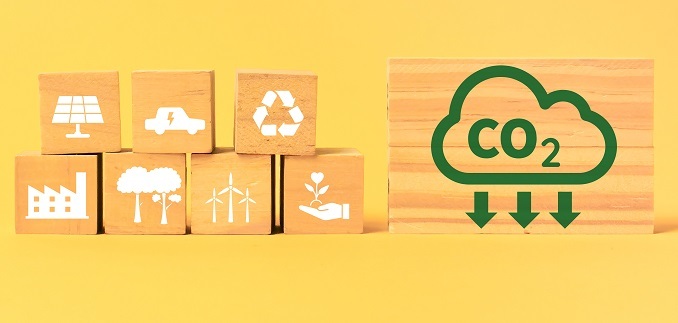
 Data Structure
Data Structure Networking
Networking RDBMS
RDBMS Operating System
Operating System Java
Java MS Excel
MS Excel iOS
iOS HTML
HTML CSS
CSS Android
Android Python
Python C Programming
C Programming C++
C++ C#
C# MongoDB
MongoDB MySQL
MySQL Javascript
Javascript PHP
PHP
- Selected Reading
- UPSC IAS Exams Notes
- Developer's Best Practices
- Questions and Answers
- Effective Resume Writing
- HR Interview Questions
- Computer Glossary
- Who is Who
What is the full form of CDM?
Introduction
The UNFCCC and CDM are mechanisms based on projects that enable developed nations to compensate for their greenhouse gas emissions by funding emission-reducing projects in developing nations.

The CDM was created to encourage long-term development and technology transfer, as well as to lower greenhouse gas emissions. No information has been omitted from the original text.
What is Carbon Credit?
A certificate known as a carbon credit permits an organization or country to release a specified amount of greenhouse gases, including carbon dioxide, into the atmosphere. These credits were designed to encourage the reduction of greenhouse gas emissions by creating a market-based system. Companies or countries that emit less than their allocated allowance have the ability to sell their unused credits to those who surpass their designated limits. This financial incentive promotes the development and implementation of low-carbon technologies and practices. Carbon credits are commonly utilized in carbon offsetting programs, like the Clean Development Mechanism (CDM), which is part of the United Nations Framework Convention on Climate Change (UNFCCC). The primary objective of carbon credits is to decrease global greenhouse gas emissions.
Objectives of Clean Development Mechanism
The Clean Development Mechanism (CDM) has several objectives, including
Encouraging sustainable development The CDM aims to encourage long-term development in developing countries by funding projects that promote economic, social, and environmental development.
Reducing greenhouse gas emissions The Clean Development Mechanism (CDM) programme aims to decrease emissions of greenhouse gases by allowing developed nations to make investments in emission-reduction initiatives in developing nations. This action helps to transfer clean technologies and promotes emission reductions in both developed and developing countries.
Providing financial incentives The CDM gives developing countries financial incentives to invest in low-carbon projects by allowing them to generate carbon credits that can be sold to developed countries to offset their emissions.
Encouraging technology transfer The CDM encourages developed nations to transmit knowledge and technology to developing nations in order to help them develop and deploy low-carbon technologies.
Facilitating international cooperation The CDM promotes international cooperation by establishing a mechanism for developed and developing countries to collaborate on reducing greenhouse gas emissions and promoting sustainable development.
Operating Details of Clean Development Mechanism in India
The CDM operates in India through several key stages
Project identification Potential CDM projects that can generate carbon credits are identified by Indian project developers. Renewable energy, energy efficiency, and waste management projects are examples of such projects.
Project validation To ensure that projects meet the CDM's criteria for sustainability and greenhouse gas emission reduction, the CDM requires that they be validated by an accredited third-party entity.

Project registration Once a project has been validated, it can be registered as a CDM project with the UNFCCC. This enables the project to generate carbon credits for sale on the carbon market.
Carbon credit issuance After a project generates carbon credits, the UNFCCC issues them and they can be sold to buyers such as governments, corporations, and individuals.
Monitoring and verification To ensure that CDM projects continue to meet the CDM's sustainability and emission reduction criteria over time, they must be monitored and verified.
Revenue generation From 2005 to 2017, CDM projects in India generated over $3 billion in revenue for project developers, according to estimates.
Advantages
Here are some advantages of the Clean Development Mechanism (CDM)
Promoting sustainable development The CDM promotes sustainable development by funding projects that benefit the economy, society, and the environment.
Supporting international cooperation The CDM promotes international cooperation by establishing a mechanism for developed and developing countries to collaborate on reducing greenhouse gas emissions and promoting sustainable development.
Generating revenue The CDM can generate revenue for developing-country project developers, which can help finance sustainable development projects and create new economic opportunities.
Conclusions
In summary, the CDM promotes sustainable development, reduces greenhouse gas emissions, encourages technology transfer, creates economic incentives, binds nations, encourages cooperation among developing countries, and provides developing countries with access to finance for entrepreneurs. The CDM has worked well in India and other developing countries, generating capital and encouraging the use of low- carbon technologies. While the CDM has its challenges and limitations, it remains an important strategy for addressing climate change and promoting sustainable development.
FAQs
Q1. Who can participate in the CDM?
Ans: The CDM is open to project developers, investors, and governments in both developed and developing countries.
Q2. How does the CDM work?
Ans: The CDM operates by permitting advanced nations to make investments in initiatives aimed at lowering emissions in developing nations. Carbon credits are generated by these projects and can be managed to sell to developed nations to offset their emissions.
Q3. What types of projects are eligible for the CDM?
Ans: The CDM funds a broad spectrum of endeavors that encourage equitable growth and lower greenhouse gas emissions, including renewable power, fuel efficiency, and waste disposal initiatives.

